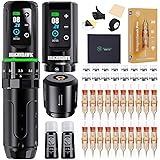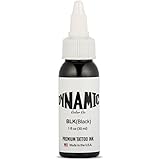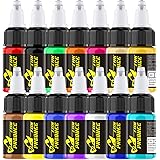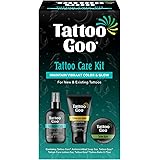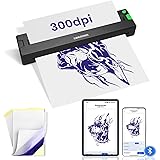The journey into any creative field, such as the beautiful world of lettering, often begins with a fundamental decision: where do I start? Much like selecting the right melody to soothe a troubled mind, as heard in the video above, choosing your unique artistic path in calligraphy or hand-lettering can bring immense comfort and fulfillment.
This pursuit of artistic style is not just about technique; it is about finding a creative home that resonates with your personal expression. Consequently, understanding the diverse options available and how to navigate them effectively becomes paramount for any aspiring artist.
Understanding Your Creative Canvas: Calligraphy vs. Hand-Lettering
Embarking on a creative journey, especially in the realm of lettering, can feel like stepping into a vast, enchanting forest. There are countless paths, each promising a different adventure, and knowing the fundamental distinctions is your first step. Moreover, the terms calligraphy and hand-lettering are often used interchangeably, yet they represent distinct artistic disciplines.
The Elegant Dance of Calligraphy
Calligraphy, at its core, is the art of beautiful writing. It involves forming letters with specific strokes and traditional tools, much like a dancer follows a precise choreography to create a graceful performance. This ancient art form adheres to established rules and historical styles, such as Copperplate, Spencerian, or Gothic.
A calligrapher typically uses dip pens, ink, and various nibs to achieve precise, consistent letterforms. Therefore, mastering calligraphy requires dedication to learning traditional techniques, understanding historical scripts, and developing a steady hand.
The Personal Touch of Hand-Lettering
Hand-lettering, on the other hand, is closer to drawing letters rather than writing them. Imagine hand-lettering as custom-tailoring an outfit for each word or phrase; every letter is crafted intentionally to fit the overall design. While calligraphy follows a traditional set of rules for letter construction, hand-lettering offers greater freedom for stylistic interpretation.
Artists engaged in hand-lettering often use a wider range of tools, including brush pens, markers, pencils, and digital tablets. This artistic flexibility allows for a vast array of unique lettering styles, making it an excellent starting point for those eager to infuse their personality directly into their art.
Deciding Your Artistic Path: Overcoming the Choice Overload
When faced with the sheer volume of lettering styles—from elegant script to bold block letters—it’s natural to feel overwhelmed, much like standing in a vast library trying to pick just one book. The video’s implicit message of “Pick Your Top Choice!” highlights a common challenge for beginners: how to select a starting point. Nevertheless, making this choice doesn’t have to be daunting; it can be an exciting part of your creative journey.
Factors Guiding Your Lettering Journey
Consider your personal preferences, much like choosing your favorite type of music. Do you gravitate towards the flowing elegance of traditional scripts, or are you drawn to more playful, modern designs? Furthermore, reflect on the purpose of your lettering. Are you aiming to create invitations, signs, personal artwork, or digital designs?
The tools you feel most comfortable with also play a significant role. Some artists find joy in the delicate control of a dip pen for fine calligraphy, while others prefer the expressive sweep of a brush pen for hand-lettering. Consequently, experimenting with different tools and styles can help you discover what feels most natural and enjoyable.
Embracing Imperfection and Growth
No matter which artistic style you choose, remember that the journey is as important as the destination. There will be wobbles and imperfections, much like a child learning to walk, but each attempt is a step forward. Moreover, embracing these moments of learning allows for genuine growth and the development of your unique artistic voice.
This creative process, this act of making, can be incredibly comforting and a source of deep satisfaction. It provides a focused outlet for expression, where the simple act of forming letters can soothe the soul. Therefore, allow yourself the grace to experiment, make mistakes, and celebrate small victories along the way.
Steps Towards Your Signature Lettering Style
Once you have a general idea of your preferences, the next step is to dive in and start exploring. Think of it as preparing a delicious meal; you gather your ingredients and then follow the recipe, adding your own flair as you become more confident. Ultimately, practical application is where your true learning and discovery will happen.
Gathering Your Artistic Toolkit
Begin by acquiring a few basic supplies. For traditional calligraphy, a simple set might include a straight pen holder, a few versatile nibs (like Nikko G or Gillott 303), black sumi ink, and smooth practice paper. Conversely, for hand-lettering, a set of brush pens in different sizes and a sketchbook can be an excellent starting point.
You do not need an extensive collection of expensive tools to begin your lettering journey. Instead, focus on understanding the fundamentals with basic equipment. Furthermore, as you progress, you will naturally discover specific tools that enhance your particular artistic style.
Consistent Practice and Creative Freedom
The key to mastering any lettering style is consistent practice. Just like learning to play a musical instrument, regular engagement builds muscle memory and refines your skills. Dedicate short, consistent periods to practice basic strokes, letterforms, and entire words.
Do not be afraid to break free from strict rules once you understand the foundations. Combine elements from different calligraphy styles, or invent entirely new forms in your hand-lettering projects. Moreover, this creative freedom is where your personal artistic expression truly shines, transforming simple letters into unique works of art.
Ultimately, whether you gravitate towards the structured beauty of traditional calligraphy or the free-form expression of hand-lettering, the most important aspect is to find joy in the process. Allow your creative journey to unfold, knowing that each stroke contributes to your unique artistic voice and offers a comforting escape.


